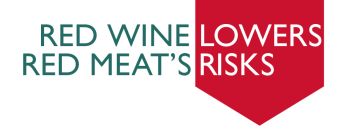RED WINE LOWERS RED MEAT’S RISKS
Current research appears to confirm, and in part explain, some of red wine’s cardiovascular benefits, especially vis-à-vis eating enjoyably. Work done in Jerusalem at Hebrew University’s Institute of Drug Research demonstrated that components of red wine, perhaps antioxidant polyphenols, vastly reduce the formation of a toxic cholesterol-altering compound following a meat meal. Let’s first review what usually happens after we enjoy the flesh of various four-footed and winged creatures.
Meats contain abundant cholesterol and polyunsaturated fats that are involved in the formation of atheroma, the plaques inside arteries that eventually choke off blood flow, leading to heart attacks and strokes. Perhaps most notorious of these dangerous and damaging blood fats is low-density lipoprotein (LDL) cholesterol, popularly known as the “bad cholesterol”. It plays an important role in the process of atherosclerosis. Not all LDL cholesterol is equally odious. Chemical changes, especially oxidation, render the devil even more evil.
A simple but potent compound called malondialdehyde is elaborated in increasing blood concentration after the consumption of meat, more so after red meat. The malondialdehyde oxidizes the LDL cholesterol to its most lethal form, thereby hugely elevating cardiovascular risk.
The group in Jerusalem fed healthy volunteers dark-meat turkey for four days, avoiding other meat and fish, and measured blood levels of maldialdehyde, which, as expected, rose progressively. They found that a greater proportion of the bad cholesterol had been transformed into its evil twin, the more active oxidized form, by 97 percent. The same individuals were then given the same diet, but this time including the equivalent of a glass of red wine (not specified) with the meat. Now, the atherogenic compounds did not go up – they actually decreased.
Pending formal publication in the journal of functional foods, the research was posted online on October 3O, 2O12, by S. Gorelik, J. Kanner, D. Schurr, and R. Kohen under the title “A Rational Approach to Prevent Postprandial Modification of LDL by Dietary Polyphenols”.

